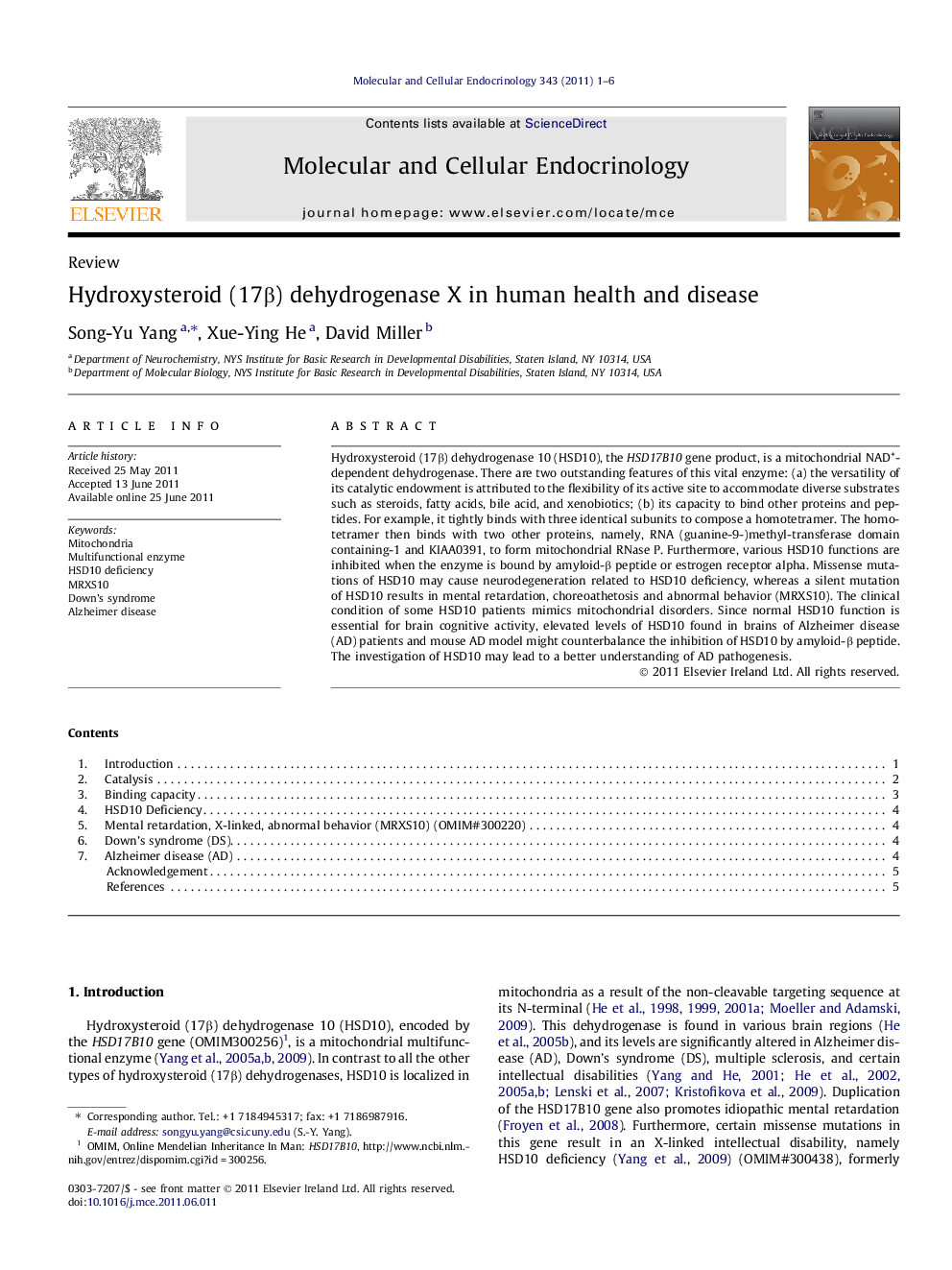| کد مقاله | کد نشریه | سال انتشار | مقاله انگلیسی | نسخه تمام متن |
|---|---|---|---|---|
| 8477762 | 1550927 | 2011 | 6 صفحه PDF | دانلود رایگان |
عنوان انگلیسی مقاله ISI
Hydroxysteroid (17β) dehydrogenase X in human health and disease
دانلود مقاله + سفارش ترجمه
دانلود مقاله ISI انگلیسی
رایگان برای ایرانیان
کلمات کلیدی
موضوعات مرتبط
علوم زیستی و بیوفناوری
بیوشیمی، ژنتیک و زیست شناسی مولکولی
بیولوژی سلول
پیش نمایش صفحه اول مقاله

چکیده انگلیسی
Hydroxysteroid (17β) dehydrogenase 10 (HSD10), the HSD17B10 gene product, is a mitochondrial NAD+-dependent dehydrogenase. There are two outstanding features of this vital enzyme: (a) the versatility of its catalytic endowment is attributed to the flexibility of its active site to accommodate diverse substrates such as steroids, fatty acids, bile acid, and xenobiotics; (b) its capacity to bind other proteins and peptides. For example, it tightly binds with three identical subunits to compose a homotetramer. The homotetramer then binds with two other proteins, namely, RNA (guanine-9-)methyl-transferase domain containing-1 and KIAA0391, to form mitochondrial RNase P. Furthermore, various HSD10 functions are inhibited when the enzyme is bound by amyloid-β peptide or estrogen receptor alpha. Missense mutations of HSD10 may cause neurodegeneration related to HSD10 deficiency, whereas a silent mutation of HSD10 results in mental retardation, choreoathetosis and abnormal behavior (MRXS10). The clinical condition of some HSD10 patients mimics mitochondrial disorders. Since normal HSD10 function is essential for brain cognitive activity, elevated levels of HSD10 found in brains of Alzheimer disease (AD) patients and mouse AD model might counterbalance the inhibition of HSD10 by amyloid-β peptide. The investigation of HSD10 may lead to a better understanding of AD pathogenesis.
ناشر
Database: Elsevier - ScienceDirect (ساینس دایرکت)
Journal: Molecular and Cellular Endocrinology - Volume 343, Issues 1â2, 22 August 2011, Pages 1-6
Journal: Molecular and Cellular Endocrinology - Volume 343, Issues 1â2, 22 August 2011, Pages 1-6
نویسندگان
Song-Yu Yang, Xue-Ying He, David Miller,